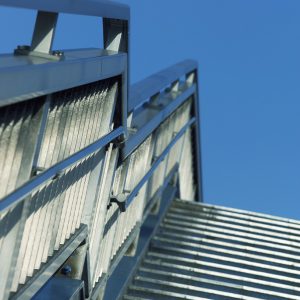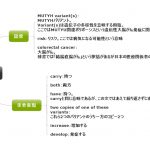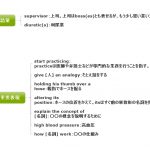
| 番号 | 用語(日本語)
参考記事 |
定義・解説(日本語) | 用語(英語)
引用元 |
定義・解説(英語) |
| 1 | 医薬品
|
薬機法で定義される医薬品(医薬品は薬事的な専門用語ではdrug(s)を用いる。一般英語ではmedication(s)やmed(s)ともいう。専門的な文脈では麻薬等と誤解される恐れはない。) | drug(s)
製造販売指針 |
Drugs specified by the PMD Act |
| 2 | 医療機器 | 薬機法で定義される医療機器 | medical device(s)
製造販売指針 |
Medical devices specified by the PMD Act |
| 3 | 規制 | 医薬品・医療機器等に係る法規制 | regulation(s)
製造販売指針 |
Regulations regarding drugs and medical devices |
| 4 | 製造販売承認 | 医薬品を製造販売(=上市)するために必要になる厚労省からの承認。(簡単のため、米国の用語を用いてNDA (new drug application)ともいえる。) | market approval
製造販売指針 |
MHLW's approval required for launching a drug |
| 5 | 製造販売承認申請 | 製造販売承認に係る申請 | market approval submission
製造販売指針 |
Submission regarding market approval |
| 6 | 有効性 | 医薬品等の有効性(通常理想的な条件で行われる試験での有効性) | efficacy, effectiveness
製造販売指針等 |
Efficacy of drugs (usually means under a study conducted with an ideal condition)
Effectiveness of drugs (usually means under real situations) |
| 7 | 安全性 | 医薬品等の安全性 | safety
製造販売指針等 |
Safety of drugs |
| 8 | 品質 | 医薬品等の品質 | quality
製造販売指針等 |
Quality of drugs |
| 9 | 開発 | 医薬品等の開発=臨床試験の実施 | development
製造販売指針等 |
Development of drugs, which usually means conducting clinical trials |
| 10 | ベネフィット・リスク | 医薬品等のもたらすベネフィットとリスクのバランス | benefit(s)/risk(s)
製造販売指針等 |
Balance of benefits and risks of drugs |
| 番号 | 用語(日本語)
参考記事 |
定義・解説(日本語) | 用語(英語)
引用元 |
定義・解説(英語) |
| 11 | 臨床試験 | 医薬品等の有効性・安全性を評価するために行われるヒトでの試験 | clinical trial(s), clinical study(ies)
製造販売指針等
|
Studies in humans conducted to evaluate the drug's efficacy and safety |
| 12 | 非臨床試験 | 通常ヒトでの試験が始まる前に動物を用いて医薬品等の有効性・安全性を評価するために行われる試験 | preclinical study(ies), nonclinical study(ies)
製造販売指針等 |
Studies in animals conducted to evaluate the drug's efficacy and safety. Preclinical studies are usually conducted before human studies are started. Nonclinical studies can be used synonymously but specifically refer to animal studies conducted after human studies are started. |
| 13 | 統計学 | 通常生物統計学を指し、ばらつきのあるデータの解釈を数学的に行う学問領域 | statistics | Statistics usually refer to biostatistics, which is a branch of sciences to mathematically interpret data with variability. |
| 14 | 忍容性 | 医薬品等の有害事象が被験者にとってどれだけ耐えられるかの指標。耐えられなければ忍容性が低いと判断される。 | tolerability | A measure of how a subject can tolerate adverse events caused by a drug. If the subject cannot tolerate the adverse events, the drug's tolerability is judged low. |
| 15 | 薬物動態 | 医薬品等が生体内でどのように吸収、分布、代謝、排泄されるかを扱う学問領域。医薬品の用量と血中濃度の関係に重点。 | pharmacokinetics (PK) | A branch of sciences about how drugs are absorbed, distributed, metabolized, and excreted in the body. Focused on the relationship between the drug dose and the blood drug concentration. |
| 16 | 薬力学 | 医薬品等が作用部位に到達してから作用を発現するまでの変化を扱う学問領域。医薬品の血中濃度と作用の強さの関係に重点。 | pharmacodynamics (PD) | A branch of sciences to deal with changes from the time a drug reaches to the site of action to the time the drug takes effect. |
| 17 | 試験デザイン | 何と何をどのような条件で比較するかというような試験手法のカテゴリー。通常臨床試験ではバイアスが最小となる無作為化二重盲検比較試験が用いられる。 | study design(s) | A category of test methods on how to compare what to what in what condition. |
| 18 | 第I相試験 | 初めてヒトに医薬品等が投与される試験。通常単回投与と反復投与で徐々に上げていき、安全性、PKを主に評価する。 | phase 1 trial(s), phase 1 study(ies) | The first study where a drug is administered to humans. Usually, the study consists of single dose and multiple dose parts with dose escalation to mainly evaluate safety and PK. |
| 19 | 第II相試験 | 患者を対象に医薬品等の有効性・安全性を評価する。医薬品等が対象患者に有効かどうかを見るproof of concept試験や複数用量を比較し最適な用量を決定する用量反応試験からなる。 | phase 2 trial(s), phase 2 study(ies) | To evaluate the drug's efficacy and safety in patients. This study phase consists of proof of concept (POC) studies where the drug's efficacy is evaluated in the target patient population and dose-ranging studies where the optimal dose is determined by comparing a couple of different doses. |
| 20 | 第III相試験 | 第II相試験で得られた結果をもとに、医薬品等の有効性・安全性を検証する試験 | phase 3 trial(s) phase 3 study(ies) | A phase 3 study is a confirmatory study to evaluate the drug's efficacy and safety based on the phase 2 study results. |
| 番号 | 用語(日本語)
参考記事 |
定義・解説(日本語) | 用語(英語)
引用元 |
定義・解説(英語) |
| 21 | 製薬会社 | 通常医薬品を製造販売する会社。ほぼ薬機法上の製造販売業者とイコールである。 | pharmaceutical company(s), pharma company(s) | Companies that distribute drugs. Usually, these companies are market authorization holders specified by the PMD Act. |
| 22 | 処方箋医薬品 | 処方箋がないと販売できない医薬品。医薬品薬機法で定義される。 | prescription drug(s) | Drugs that cannot be sold without a prescription. Specified by the PMD Act. |
| 23 | 医師 | 一般的な医師。PhDと区別する意味合いもある。特定の文脈ではsurgeon(s)が使われることもある。 | physician(s) |
Term used to refer to general medical doctors, differentiating from doctors of philosophy, PhDs. In a specific context, surgeon(s) is used. |
| 24 | 病院やクリニック | 医療機関の種類。日本では病床数が20あるかないかで区別されている。 | hospital(s)/clinic(s) | Type of health institutions. In Japan, hospitals have 20 beds or more, whereas clinics have a fewer number of beds. |
| 25 | 添付文書 | 薬機法で製造販売業者が医薬品に添付することが義務付けられている説明書 | package insert(s) | Users guide that market authorization holders (pharma companies) are required to attach to drugs distributed based on the PMD Act |
| 26 | 医療機関 | 医療従事者が医療を提供する施設 | health (medical) institution(s) | Institutions where healthcare professionals provide healthcare |
| 27 | 医療従事者 | 医師、歯科医師、薬剤師、看護師等の医療を提供する専門職 | healthcare professional(s) | Professionals who provide healthcare including physicians, dentists, pharmacists, nurses, etc. |
| 28 | 規制当局 | 医薬品等を規制する政府の機関 | regulatory (health) authority(s) | Governmental bodies that regulate drug and other health products. |
| 29 | 厚生労働省 (MHLW) | 健康、労働、福祉を担当する日本の規制当局。PMDAの審査に基づき、製造販売承認を与える。 | Ministry of Health, Labour and Welfare (MHLW) | Japan's health authority responsible for health, labor, and welfare. Grants market approval based on the PMDA's review. |
| 30 | 行政法人医薬品医療機器総合機構 (PMDA) | 医薬品の審査、安全対策、健康被害救済を担当する日本の規制当局 | Pharmaceuticals and Medical Devices Agency (PMDA) | Japan's regulatory authority responsible for drug reviews, safety measures, and relief services for adverse health effects. |









